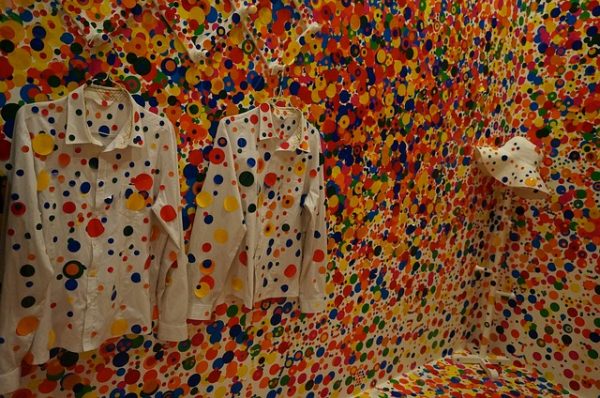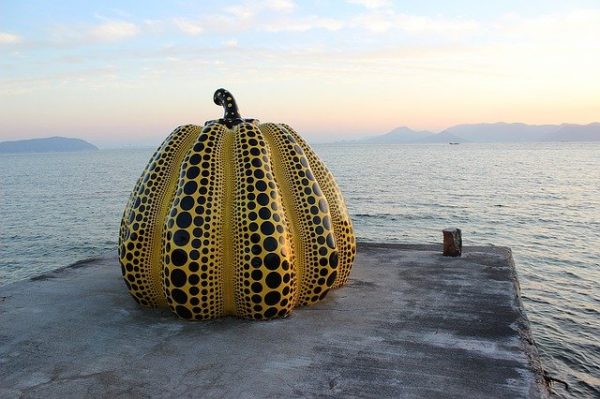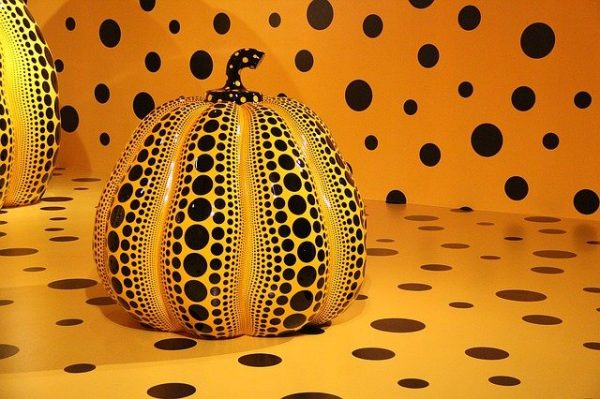In 2021, the Gropius Bau in Berlin dedicates a retrospective to the artist Yayoi Kusama. The ‘queen of polka dots’, with whom she decorated the living rooms and streets of New York from 1958 to 1973. She didn’t stop making art even during the dramatic weeks of the lockdown. Instead, she gave her fans a message of hope. In particular, through a poem in free verse, the artist encouraged humanity towards solidarity, peace, respect, and mutual trust. In spring 2021, the Gropius Bau in Berlin will host a major Kusama’s exhibition in Berlin.
The exhibition, the first-ever organized in Germany, will retrace 70 years of the famous Japanese artist’s production, reconstructing her exhibitions and the most famous “Infinity Mirror rooms.“

The fair that will open on 19 March 2021 at the Gropius Bau in Berlin is the first-ever in Germany. Yayoi Kusama: A Retrospective is the title of the show that will retrace 70 years of Yayoi Kusama’s career, highlighting, in particular, the influence her art had in Europe.
The Yayoi Kusama exhibition at the Gropius Bau in Berlin
The exhibition will reconstruct eight shows by Kusama from 1952 to 1983. The retrospective focuses in particular on how the Japanese artist’s work developed over the decades.
The show begins in fact with the exhibitions set up in her hometown, Matsumoto, Yayoi Kusama Solo Exhibition and Yayoi Kusama Recent Works (1952). In these, the immersive nature of her subsequent research already emerged.

Aggregation: One Thousand Boats Show is Kusama’s first environmental installation in New York. It included a wooden rowboat covered with phallus-shaped objects made of white fabric.
This motif then reappeared in the 1964 Driving Image Show in New York. Here, in 1965, she created her first Infinity Mirror Room. This type of installation made the artist famous all over the world.
It is a series of inflatable sculptures in a sprawling shape, in bright colors and covered with polka dots (a typical sign of Kusama), enclosed in a room full of mirrors. Thus, the continuous play of reflections creates the illusion of infinite space, a fantastic and psychedelic world governed by the artist’s singular creatures.

“Polka dots are a way to infinity,” Kusama explained in 1968. “When we cancel nature and our body with polka dots, we become part of the unity of our environment. I become part of the eternal, and we cancel ourselves in Love “.
The influence of Yayoi Kusama in the world
“We are delighted that our Yayoi Kusama retrospective showcases the work of a visionary artist,” said Stephanie Rosenthal, director of the Gropius Bau.
“Kusama not only established a unique status in the art world of the 1960s with her multidisciplinary practice. Her political statements also contributed to the feminist debate of the time. Some issues that have not lost their importance today can be found from the earliest stages of his work.
This retrospective will reflect on the artist’s presence in Germany and retrace the development of her art from the 1950s. One of the objectives of the Berlin exhibition “, concludes Rosenthal,” is to emphasize the important role she played.”
The show will include a new Infinity Mirror Room, recent paintings and an installation in the Gropius Bau atrium.